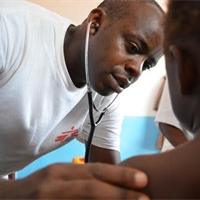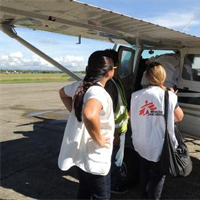Government is clear that COVID-19 infections are projected to continue rising until a peak in September, and we should, therefore, accept that COVID-19 transmission will not decrease over the short term. What does this mean for the people in temporary shelters, finding themselves in potential breeding grounds for COVID-19 during the extended lockdown and thereafter? The need for medium and longer-term alternative solutions could hardly be more urgent,” says Liesbeth Schockaert, MSF Project Coordinator for Regional Migration.
Another common point across shelters is the presence of extremely vulnerable people with chronic conditions, increasing their risk of disease severity and death related to COVID-19.
“Residents of Strandfontein include several elderly people, at least one with severely altered mental state; several people with HIV, a known risk factor for tuberculosis and a potential risk factor for COVID-19; several people with severe mental health diseases such as schizophrenia and dementia; people with urinary and fecal incontinence; several people with chronic respiratory conditions; several people with hypertension,” says van Cutsem.
Temporary shelters and camps that MSF teams have assessed that offer better conditions tend to be smaller facilities located in communities where the community members offer support in the form of food or clothing for occupants, thereby enhancing the existing services and minimizing risks of social stigma.
What Our People Say

"



